|
May 15, 2020
Dear Neighbors and Friends:
I hope that you and your loved ones are doing well, staying healthy, and looking out for your neighbors and friends.
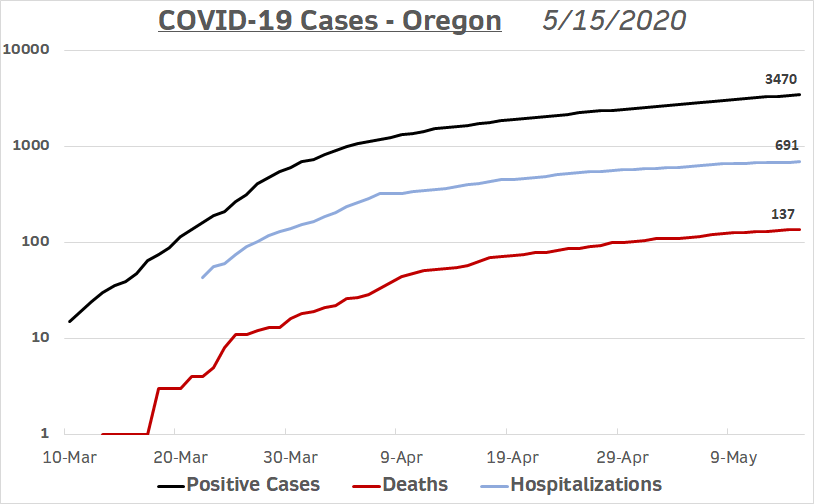
TODAY’S CORONAVIRUS AND CORONAVIRUS RESPONSE UPDATE
-
Positive Cases: OHA has reported that 63 additional Oregonians tested positive for COVID-19 yesterday, putting the total at 3,470.
-
Total Tests: The total number of tests in Oregon now stands at 89,444. That’s an increase of 2,765 tests, another large increase.
-
Ratio: The percentage of positive results for today is 2.2%. Today’s national percentage is 6.9%. See below for a graph showing Oregon’s daily percentage changes over the last 14 days.
-
Deaths: I’m happy to report 0 additional deaths due to the virus. The total number of deaths in Oregon remains at 137.
-
Hospitalized: The number of Oregonians who have been hospitalized with symptoms, and who have also tested positive for the disease, increased by 6, and is now at 691.
-
Presumptive Cases: OHA is now including “presumptive COVID-19 cases” in its daily reports, consistent with recently amended guidance from the Centers for Disease Control and Prevention. A presumptive case is someone who does not yet have a positive PCR test result but is showing symptoms and has had close contact with a confirmed case. If they later test positive by PCR, those will be recategorized as confirmed cases. Today the number of new presumptive cases is 1, with the total at 72.
-
Other Hospital Information:
- Patients Currently w COVID-19 Symptoms (who may or may not have received a positive test result yet): 161 (a decrease of 2 from yesterday). Of those, 54 have already received a positive test back.
- Available ICU Beds: 198 (an increase of 7 from yesterday).
- Other Available Beds: 1,628 (a decrease of 78 from yesterday).
- ICU Patients w COVID-19 Symptoms (who may or may not have received a positive test result yet): 46 (an increase of 8 from yesterday).
- COVID-19 Patients Currently on Ventilators: 19 (an increase of 2 from yesterday).
- Available Ventilators: 791 (7 more than yesterday).
-
Today’s National Numbers:
-
PPE:
- In the last 24 hours the Emergency Coordination Center has received 73,380 additional face masks. In addition, we learned that 250,000 surgical masks had to be returned for some reason.
-
Other Brief Updates:
- The OHA reported that visits to hospital emergency rooms for non-COVID reasons is starting to go back up. This is likely a combination of people feeling safer going to hospitals for their problems and the fact that more people are resuming activities that might wind up in a trip to the ER.
- The Department of Corrections is reporting ongoing increases in the number of staff and adults in custody testing positive for COVID-19. As of May 13, 32 staff members and 113 adults in custody tested positive, more than doubling in the last week. Nearly all of the increase was at one facility, the Oregon State Prison, with 80 AICs and 21 staff testing positive. In the system as a whole, 9 staff and 7 AICs have recovered from the disease.
New Reopening Guidances Announced
A new set of reopening guidances was released today. A couple of them actually came out late yesterday and I reported on them in yesterday’s newsletter, but most of them are new today. Here they are:
Guidance on Face Coverings Under new statewide guidance for face coverings, transit and ride-sharing riders and drivers must wear face coverings. This applies also to employees in businesses that have contact with the public (e.g., groceries and other retail, restaurants, gyms, personal care) are required to wear face coverings. Employers must provide them to workers who need them. Those businesses may choose to require customers to wear face coverings. In either case, there must be accommodations for people who for medical reasons have difficulty wearing a face covering. Even if a business does not require a customer to wear a face covering, customers are advised to wear a face covering in indoor settings that put them in close contact with others.
Summer School and Summer Program Guidance In an effort to bring students back to classrooms safely, ODE has issued new statewide guidance for in-person instruction for summer school and other summer programs. The guidance ensures that all in-person instruction minimizes health and safety risks while improving student connections and learning. The guidance requires all summer educational settings to develop communicable disease management plans, with measures for infection control, physical distancing, screening for COVID-19 symptoms, and contact tracing.
Summer Camp Guidance As Oregon children transition from the school year to summer, OHA has also issued new statewide guidance for the safe operation of summer camps. All camps must have a communicable disease management plan in place for staff and for youth.
Public Transit Guidance Transit has continued to operate throughout this crisis, but new statewide guidance for public transit will help to ensure that the growing number of Oregonians returning to work can travel safely.
Guidance for Oregonians Experiencing Homelessness and Service Providers The intent of Governor Brown’s executive order is to ensure the health and safety of all Oregonians during the COVID-19 pandemic, whether individuals are sheltered or unsheltered. Updated statewide guidance reiterates that COVID-19 health and safety directives are not to be used to criminalize homelessness.
Gyms and Fitness Guidance (Phase I Counties Only) Gyms and other fitness facilities in counties that have reopened for Phase I will be required to follow new health and safety guidance. Under the guidance, physical distancing measures are required, and contact sports remain prohibited.
Legislative Emergency Board Allocates Money to Local Governments Amidst Controversy
The E-Board met this afternoon to discuss and vote on two measures. The first measure would split the nearly $1.4 billion coming to the state from the CARES Act Coronavirus Relief Fund (CRF) between state COVID-related expenditures, local government (county, city, special district), COVID-Related expenditures, and a reserve fund for additional expenditures. Roughly half would go out to reimburse for past and projected public health expenditures, and the other half would be put in reserve for future expenses related to the pandemic and its economic impact.
The second measure specifies how the local dollars would be distributed.
Both proposals came as the result of an agreement involving the Senate President, the Speaker of the House, and the Governor.
At the heart of both proposals is the notion that the first use of these funds should go to address expenses that have been incurred directly in response to the public health aspects of the emergency: testing, providing PPE, supporting first-responders, outreach and education, emergency shelter, etc. Counties, cities, and the state have already incurred considerable expenses in fighting the disease and getting regions ready for reopening. You’ll see that these are all intended to be priority expenditures under the federal guidance for use of the CRF.
The proposals became controversial because the guidance also allows money to be used to help local businesses deal with the economic hardship of required closures. Many local governments, particularly those in areas that have not been hard hit by the virus, but have seen losses to their local businesses and workforce, would prefer to see the money go out on a per-capita basis, irrespective of public health expenditures. As a result, today’s proposals have been opposed by the organizations representing local governments.
The Legislative leaders and Governor indicated that they too would like to see money go out to help businesses, workers, renters and in other ways mitigate the economic impacts. But they feel that it’s important to first make sure that state and local public health needs are met, that we have the resources for testing, tracing, and quarantining necessary to contain the virus and reopen the economy. It’s also important to make sure that we have the resources to keep the elderly, people with disabilities, and others living in congregate care safe. It’s important that we have the PPE necessary to keep workers and patients/clients safe.
Once the counties, cities, and state have been reimbursed for these expenses and an adequate amount set aside for future needs, further distributions can be used for economic support from the more than $500 million being put into reserve. Those decisions will be left up to the Emergency Board in future meetings.
Both measures ultimately passed, but the first one passed on a strictly partisan vote. Republicans wanted to see the money go out to the counties as block grants and allow the counties to decide how they were going to spend it. Democrats wanted to make sure that public health expenditures were covered first and the payments come in the form of reimbursements.
Antibody (Serology) Testing: Some Good News and Bad News
I’ve mentioned before that the OHA has not been optimistic about the use of serology tests here in Oregon. These are tests that look for the presence of antibodies, the proteins that the body produces as part of its effort to fight a virus. The presence of antibodies in the blood generally is an indication that an individual has had a particular disease, in this case COVID-19. With many diseases, having antibodies creates a level of immunity from getting the disease again. (It’s not yet clear if this is true for COVID-19 and if so, how long it lasts.)
The reason for their caution is three-fold: First, the tests currently on the market have been approved on an emergency basis and are very uneven in their accuracy. Second, inaccuracies in their sensitivity (ability to detect antibodies) and their specificity (ability to distinguish antibodies for this disease from antibodies for some other disease) become magnified when used in a region with a relatively low rate of infection, such as Oregon right now. And third, while it can be a useful analytical tool to understand how pervasive the disease has been in an area, it could be misused and give a false sense of confidence to an individual who tests positive (correctly or incorrectly) for the antibodies.
Legislators heard from Dr. Dana Hagunani, the OHA’s Chief Medical Officer, yesterday that progress is being made on the first problem. At least two of the tests, those from Roche and Abbott, are showing real promise for accuracy on both the sensitivity and specificity registers.
That’s the good news. The bad news is that it’s not clear that we’ll be getting those tests in Oregon anytime soon. And when we do, it’s not clear if testing positive for antibodies will really give someone the “immunity passport” that so many would love to have.
By the way, you may have heard reports of a recent preliminary study that calls into question the Abbott rapid diagnostic test. That’s a different kind of test, and it’s not yet clear if that test really does have a problem. The OHA has not observed that problem with the rapid diagnostic machines that have come into Oregon.
There Is Still Federal Small Business Assistance Money Available
We just received a release from the Governor, joined by organizations representing Oregon banks and credit unions, letting us know that there is still nearly $100 million in PPP and other loans available for small businesses. Even if you were denied in the first round of applications, you may still qualify. Business Oregon has updated their small business navigator, which has a number of resources and a hotline to help you navigate the potential funding sources that are out there.
Additional Graphs:
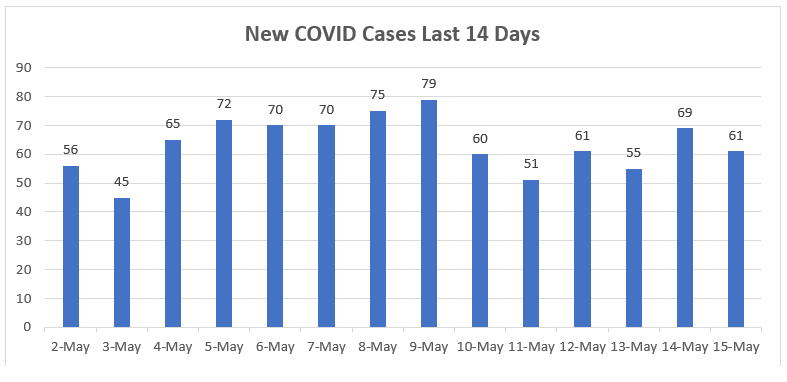

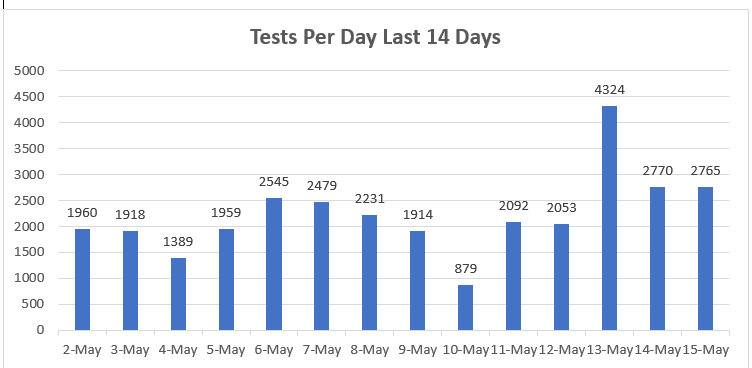
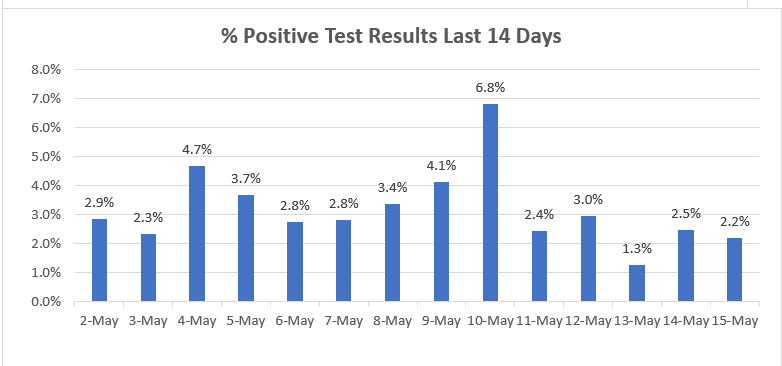
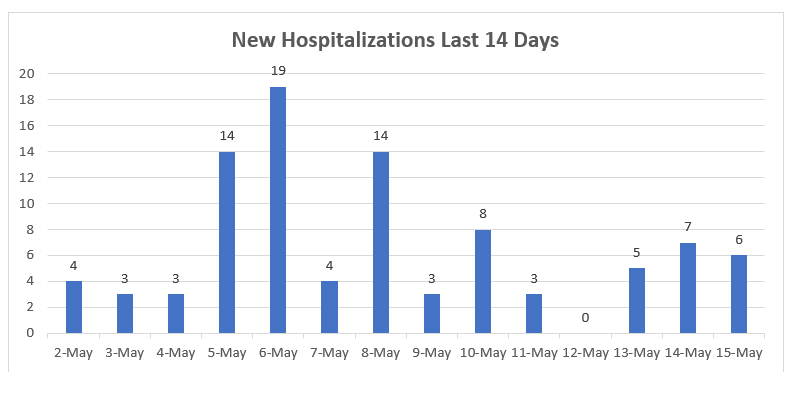 Want to See Past Newsletters?
If there was COVID-related information in a past newsletter that you want to go back to, but find you’ve deleted it, you can always go to my legislative website (www.senatordembrow.com), click on “News and Information,” and you’ll find them all there. Also, if someone forwarded you this newsletter and you’d like to get it directly, you can sign up for it there.
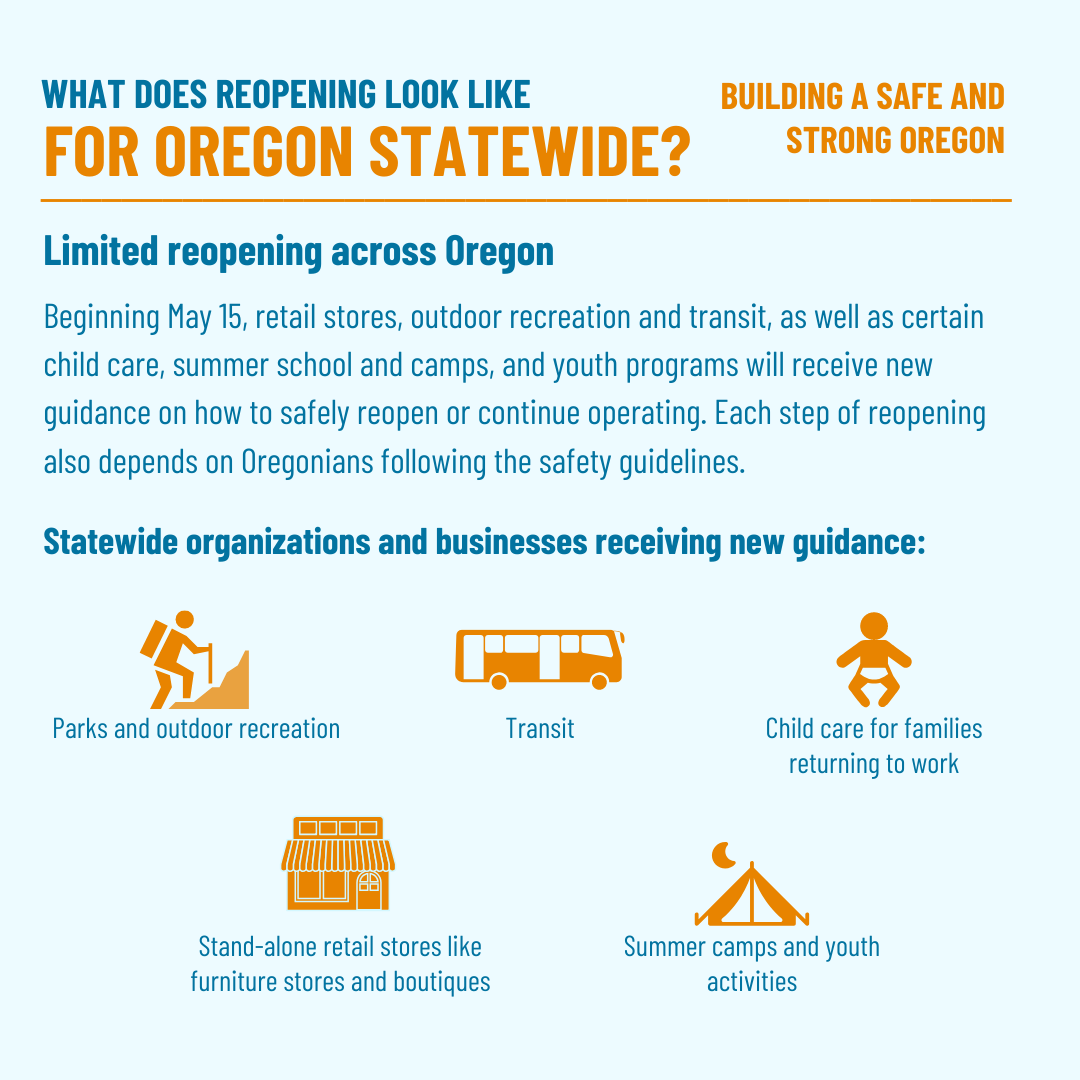
AND FINALLY,
Here again are some resources that you will find useful:
If the above links are not providing you with answers to your questions or directing you to the help that you need, please consider me and my office to be a resource. We’ll do our best to assist you or steer you in the right direction.
Best,
 Senator Michael Dembrow
District 23
email: Sen.MichaelDembrow@oregonlegislature.gov
web: www.senatordembrow.com
phone: 503-986-1723
mail: 900 Court St NE, S-407, Salem, OR, 97301
|